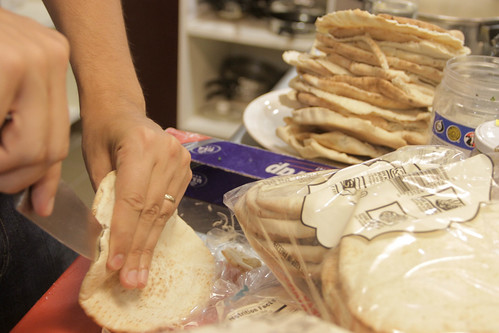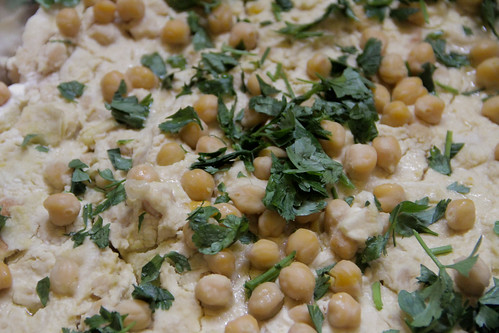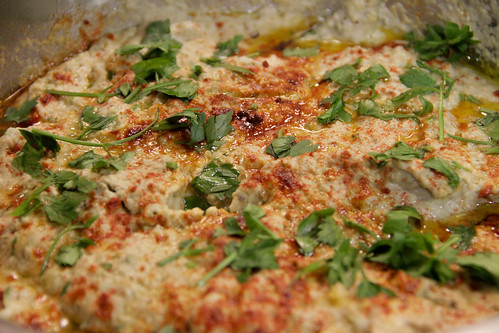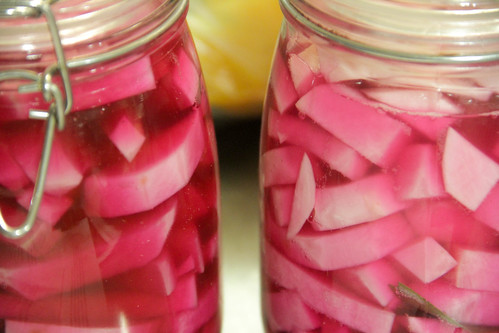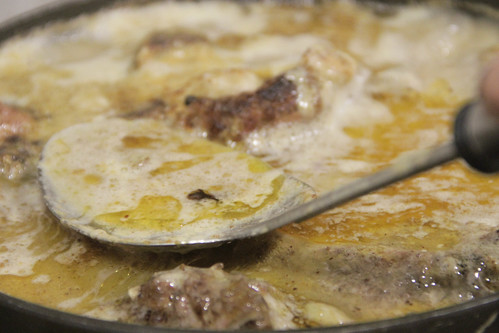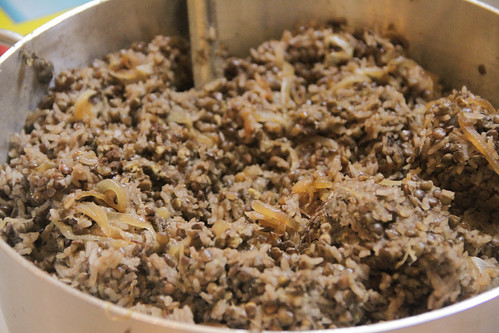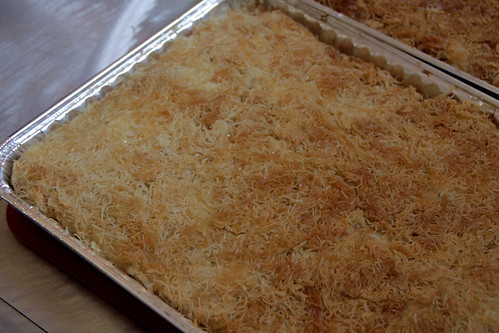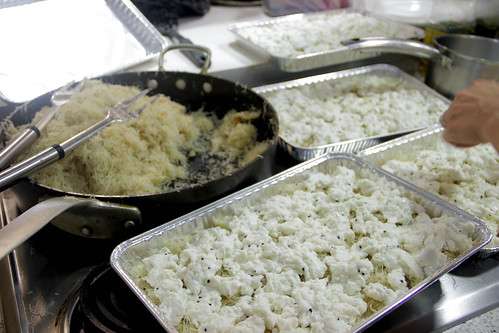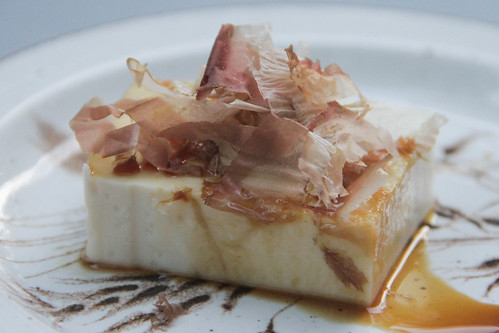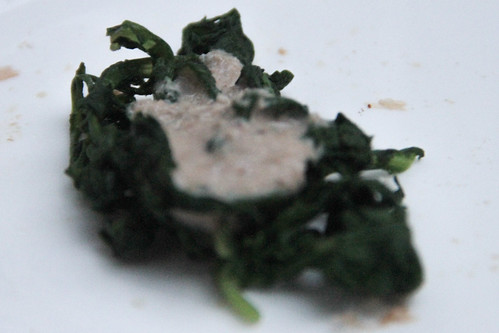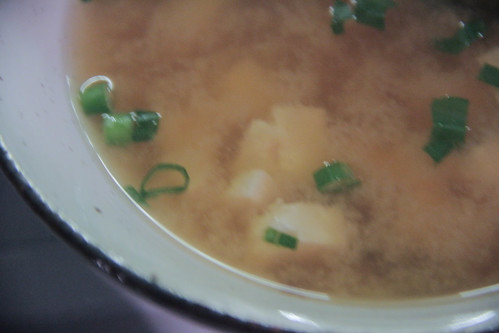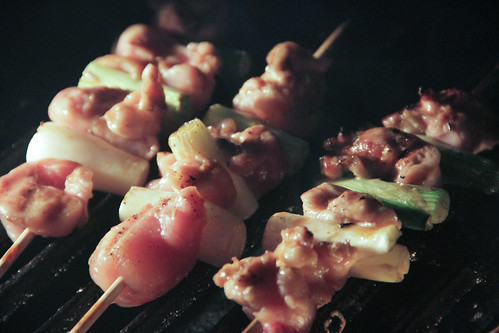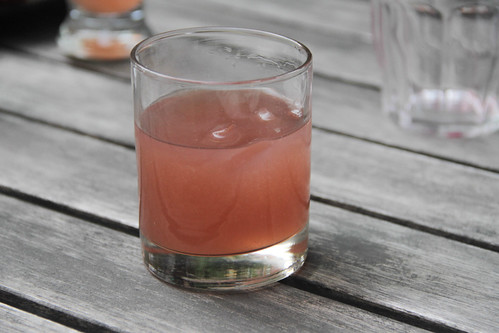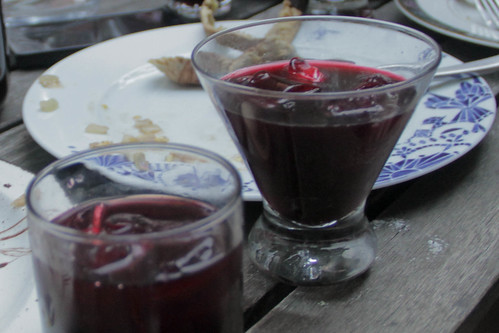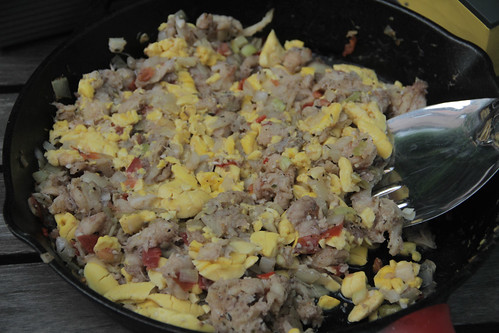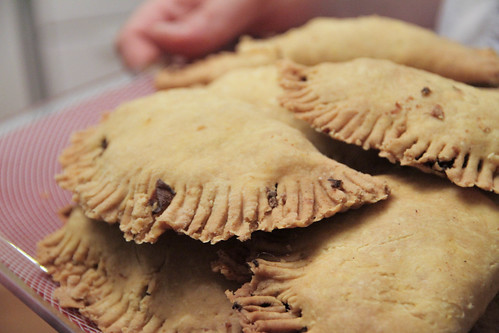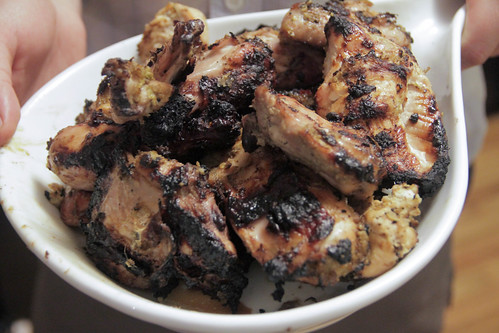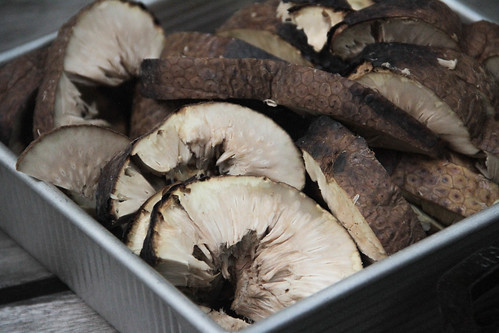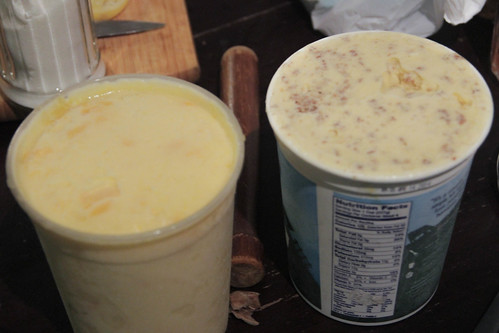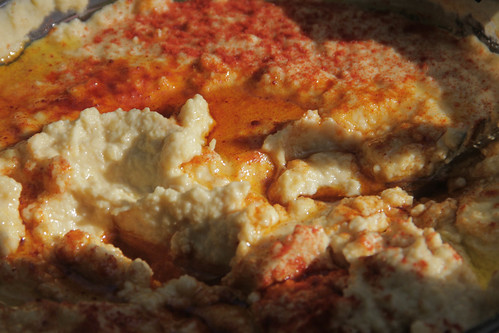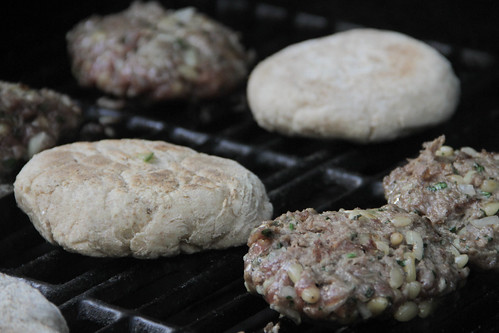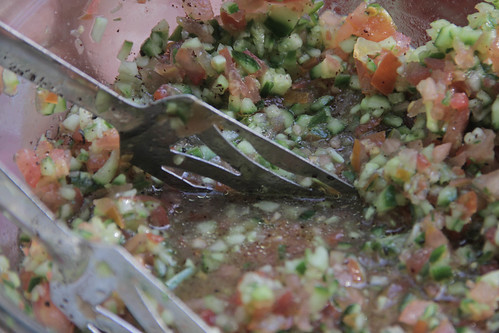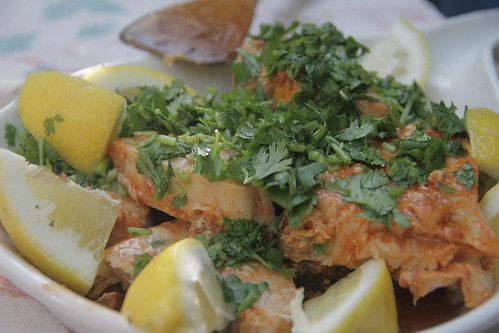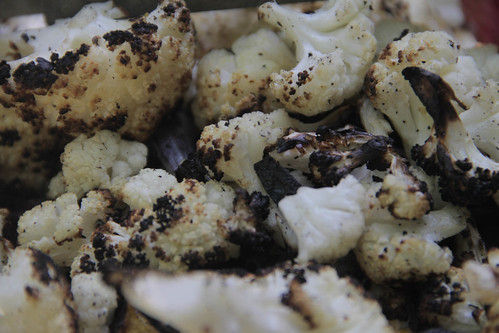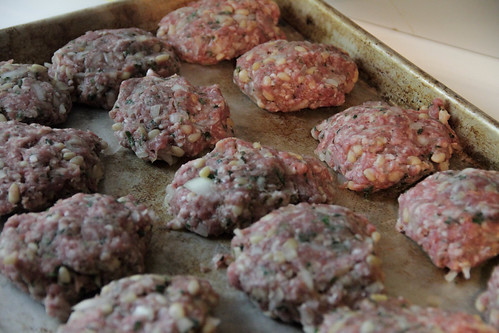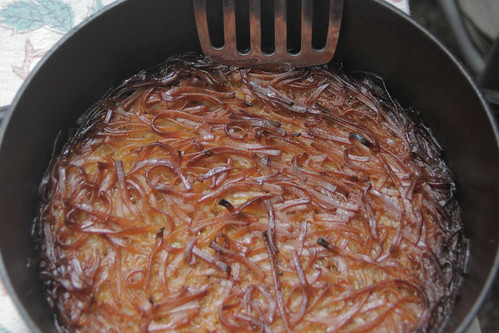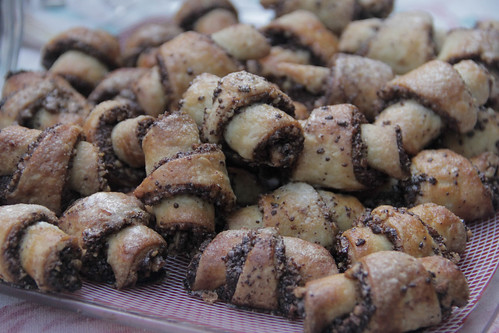Between the Jordan and Kazakhstan meals, we moved across the country, to Portland, Oregon. We took a three month break while settling in to our new city and a new house, and I took advantage of the time to learn about a country I knew next to nothing about. Powell's Books had exactly one book on the country, a travelogue entitled Apples Are From Kazakhstan. Thanks to the title, you've already learned one true fact about the country. In reading it, I learned a lot more about how this huge expanse — steppes and mountains and desert and farmland as large as Western Europe — went through a wrenching transformation in the twentieth century. A centuries-old lifestyle adapted from the nomadic days, which relied on livestock-grazing and the occasional orchard-growing to get the most out of a meager soil, was upturned by centralized Soviet planning, and large-scale farming efforts led to completely unnecessary famines as well as the emasculation of the Aral Sea as water was diverted to grow cotton. Truth be told, I didn't find the traditional Kazakh cuisine all that appetizing. The much-celebrated national dish, beshbarmak, came out as greasy broth, bland boiled lamb, and slippery noodles. To be fair, I didn't cook with horse meat or sausage, and I couldn't find fermented camel's milk, and maybe steppe-grazed Kazakh mutton has a better flavor and certainly would have been more freshly slaughtered than what I got at SE 122nd and Division in a sack labeled "LAM." So, we didn't have exactly what would have been served in any respectable yurt, but I have to imagine that even those foods would have benefitted from a little spice and some degreasing.

It was a smaller crowd for this first Nosh in the new place: Derek, Alondra, and Rachael.
Baursak | Fried puffy bread |Recipe

How can you go wrong with fried bread? The stuff of street vendors the world 'round, Central Asia has hopped bigtime on the wheat-dough-in-hot-oil bandwagon. Yes, they look like tofu squares. But they were a lot tastier, and went great with tea as an appetizer. Too bad this was the best part of the meal.
Chai | Tea | Recipe

Fermented mare's milk seems to be a very important part of Kazakh culture and hospitality, but my feeble attempts to find the milk of a horse utterly failed. Since there's apparently no substitute, I leaned on another, if not at all unique, tradition of drinking tea. At least the high (cow's) milk content pays homage to the high position of dairy within the traditional nomadic diet.
Kuyrdak | Meat and organs with onions | Recipe

I know a half-dozen places in New York where you could get lamb liver any day of the week. But apparently there isn't the critical mass to keep such a thing in ready supply even at the more ambitious Portland butchers, so calling around the day before proved useful only to learn that I could have gotten it with a few days' notice. I got a little obsessive with the hunt, and skipped out of a friend's birthday party at a bar to check if the fancy supermarket across the street might have something, and they indeed had a little frozen tub of calves' liver — good enough! Except it was hardly worth it, as the resulting dish, a supposed delicacy, was mushy, greasy, and bland. Sigh.
Beshbarmak | Boiled meat and noodles in broth | Recipe

The famous pinnacle of hospitality in this part of the world, this stew atop lasagna-esque noodles is embedded with ritual around giving different body parts to different family members based on superstitions about the effects on each person's virtue. All I had was randomly cut shoulder, I think, but I think that no matter the body part, boiling (without spices even!) really is probably one of the worst ways to cook lamb. Greasy, bland. Oh well, at least it was sorta fun to roll out and cut up the noodles — rolling out dough is something I've gotten a lot better at the past few years!
Chak-chak | Fried dough in honey syrup | Recipe

Whereas I suspect the above dish just is what it is, I know for sure I screwed this one up. It's promising enough: what could be bad about fried dough bits doused in a honey sauce? Well, failed technique, that's what. Rather than mixing the two components first in a bowl and then making the traditional pyramid, I misread the instructions, and made the pyramid before pouring over the syrup. Half the fried bits were oversoaked, half were totally dry, and there was a sticky mess from the spillover. Oops.
Fruit and nuts
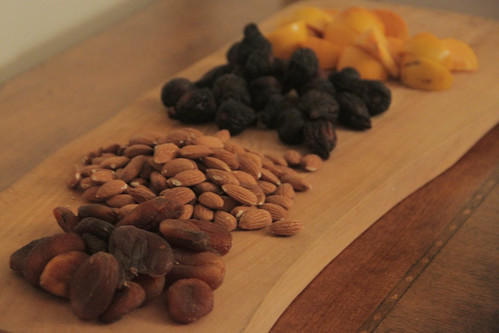
I found essentially nothing about Kazakh desserts, but I did read that nuts and fruits are often served, so I scraped together some seasonal fruits (persimmon, apple) and some dried ones (apricots, figs) along with almonds. Went nicely with the tea.
One thing that was a pleasant success about the meal was discovering that Portland holds more promise for ethnic-market shopping than I'd expected. While small, and not particularly helpful for this meal, Roman Russian Food has a lot of the base ingredients I'll need for Slavic foods, and Mingala International Foods where I got the lamb has a surprising variety of global foods. Makes me hopeful I'll find plenty more.
